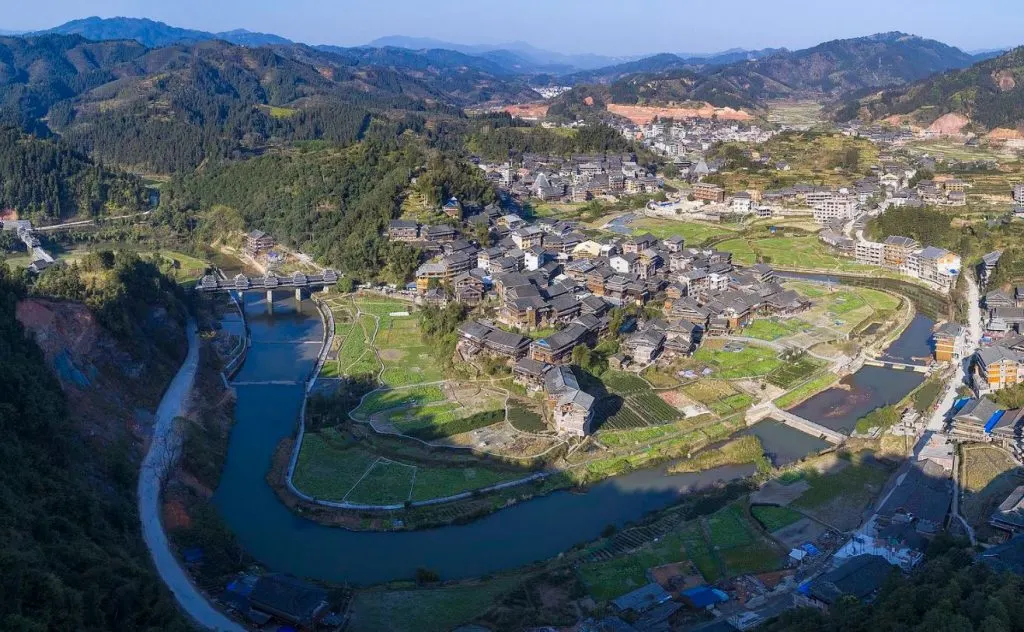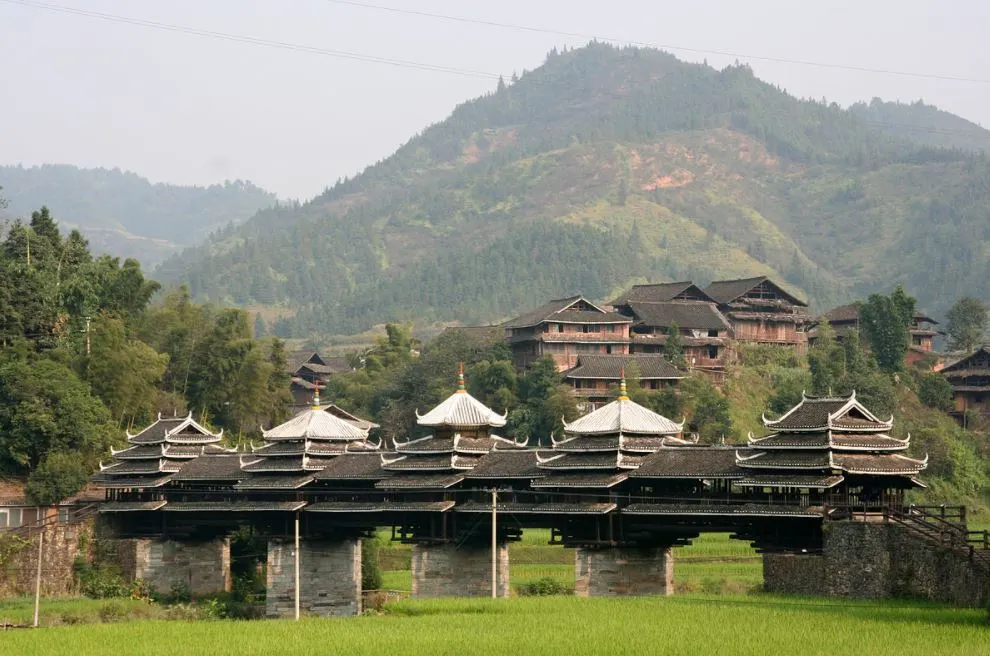Very few awe-inspiring bridges in the world have a more traditional design than this amazing bridge in China.
In this post, we’ll take a closer look at some interesting facts about the Chengyang Bridge, one of China’s magnificent treasures!
1. It’s located in the heart of China
The amazing Chengyang Bridge is located right in the heart of China, a massive and very diverse country. You need to travel quite a bit before reaching a major city.
This city is Guilin which is situated about 100 kilometers (60 miles) to the southwest of the bridge. Guangzhou and Hong Kong are located about 1,000 kilometers (600 miles) in the same direction.
The bridge can be found in the village of Chengyang in Sanijang County. This is in the autonomous region of Guanxi, officially known as the “Guangxi Zhuang Autonomous Region.”

2. This area of China can be described as rural
The region of Guanxi can be described as extremely mountainous and rural. This means that CHengyang is basically a small village surrounded by rice terraces in a small valley of the Linxi River.
The people in this farming village also make money from tea plantations up in the hills surrounding it along with the rice fields next to the river.
All of this makes this bridge one of the most picturesque spots in the region, which has turned it into a popular tourist attraction as well.

3. It goes by multiple different names
Apart from simply the “Chengyang Bridge,” which is a reference to the village, it’s located in, the bridge has a wide variety of other names as well. These include:
- Yongji Bridge of Chengyang.
- Chengyang Wind and Rain Bridge.
- Panlong Bridge.

4. It was built by 1 of the 56 ethnic groups in China

The bridge was built by the “Kam People,” an ethnic minority group in China. These people are officially known as the “Dong People” in China, one of 56 such groups (we told you that China is quite diverse, right?)
These are so-called Kam–Sui people who are native to the southern part of China. Their most popular product is called “Kam Sweet Rice,” a typical type of rice that is produced in the region.
As of today, there are nearly 3 million Kam People who live in the Eastern Guizhou, Western Hunan, and Northern Guangxi regions of China.

5. It’s a so-called “covered bridge”
The Dong People are actually famous for their architectural design of bridges referred to as “covered bridges,” also called “wind and rain bridges.” The bridge in CHangyang is a prime example of this type of bridge.
Covered bridges feature a roof and sidings which results in these bridges almost completely being enclosed. This protects the bridge from the natural elements and increases its lifespan tremendously.
Non-covered wooden bridges only last for about 2 decades but covered bridges can last over a century! This makes it quite worthwhile to add a roof to it, don’t you think?

6. The structure is well over a century old
Apart from being the epitome of wind and rain bridges, the Chengyang bridge is also the perfect example as to why adding a roof to a wooden bridge is a great idea.
That’s because this bridge was constructed in the year 1912, well over a century ago, and still stands today! This doesn’t mean, however, that the bridge doesn’t require any maintenance at all, though.
There are reportedly still over 100 of these traditional covered bridges located in the area, but none of these are as big as the one in Chengyang.

7. The bridge itself was mostly constructed using wood
While it’s clear that the roof was added because the bridge was mostly constructed using wood, this doesn’t mean that all elements of the bridge are made of wood.
Building a bridge over a river using wooden piers wouldn’t result in a long lifespan of the bridge, so the entire wooden structure rests on stone piers. The roof of the bridge is covered with tiles as well.
As you can see from the image below, the masonry of these piers wasn’t exactly a quality job, but they still stand today and that’s what matters most.

8. It’s not that long but it has a lot of traditional features
Even though the Chengyang Bridge is the biggest wind and rain bridge in the region, it’s not particularly long compared to some other famous bridges in the world.
The bridge has a total length of just 64.4 meters (211 feet) and the corridor in the center of the bridge is only 3.4 meters (11 feet) wide. The height above the river is only about 10 meters (33 feet) as well.
The main features of the bridge are the Chinese pavilions which give the bridge its distinctive appearance. The area of Chengyang is the perfect place to hike, and a stop at this idyllic bridge is a must if you happen to be in the region!

